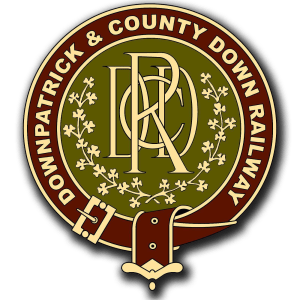Railway Visitors Want Longer Line

Where the rails end at the extreme of the South Line, which is essentially “mothballed”
The majority of passengers on the Downpatrick & County Down Railway think that extension of the railway should be the local heritage railway’s number one priority. In a survey conducted between July and when summer trains finished two weeks ago, railway visitors were asked to name the single thing that they thought could be done to improve the DCDR, with 52% of visitors calling for a longer train trip.
Other items that were named included better exhibitions and access to carriages currently in storage in an unrestored condition. The railway also scored exceptionally well in terms of performance, with over 90% of visitors rating the train journey to Inch Abbey as good or excellent, and value for money. It also showed a large increase of non-Northern Irish visitors to the DCDR, now making up 35% of the visitor numbers.
However, while a longer line is top of the wish-list of passengers, it is beyond the railway’s control. In every single survey we carry out with our passengers the most common comment they make is that they want a longer line. We are working away at the other issues, such as better exhibitions and further access to our carriage collection – this is all tied up with our Heritage Lottery Fund application. But while the demand is there for a longer line, and we have the equipment and manpower to work on such a project, we can’t see how we can do it in the short term. The Inch Abbey line cannot be extended further – it’s as far as it goes – so we have to look at the South Line.
Downpatrick is unique in the heritage railway sector across the UK and Ireland in that it has a triangle of track – a feature of the original line which was closed in 1950. The triangle allowed express trains travelling from Belfast to Newcastle to stop at an interchange platform called Downpatrick Loop, so saving 20 minutes on their journey time. This means that we have one line heading north, to Inch Abbey, and one heading south towards Newcastle. Since the Inch Abbey line opened we have been concentrating on making it a success, which it has certainly been – increasing our passenger numbers from 2-3,000 per annum to the 10,000 mark today. That’s because for the first time we’ve been able to offer a destination that people could get off and visit, and the trouble with the South Line is that it ends in a middle of a field – and people wonder why the train’s stopped!
At the minute the south line, which for years was associated with the railway and a ‘trip to the Loop Platform’ is essentially mothballed, seeing only the occasional special event train, such as the upcoming Halloween Ghost Trains. It doesn’t make sense not to make use of what we have laid, but until we can take people somewhere they want to go on the South Line there’s not much future for it, and the goal for that line has always been to reach a destination similar to Inch Abbey. Ideally what we’d like to do is to run a train on both lines, perhaps the steam train along the old Loop Line so people could travel between an eventual destination on the South Line and Inch Abbey, changing for a diesel train for Downpatrick town at the Loop Platform. We’ve tried that in a limited fashion on a recent World War 2 event and it proved very popular with our passengers, with people milling about on the Loop Platform changing trains just like in the old days” he continues. But he adds that at the moment any extension is not possible as the necessary trackbed is not available.
We don’t want to promise our passengers something we cannot deliver – we want to and will work hard with the local community to see this extension completed and that any potential return of the tracks nearly sixty years after they were lifted is seen as a welcome and positive development.
But one thing that the DCDR will not be doing is announcing that they will reopen whole branch lines. It would be unrealistic to say ‘We’re reopening the line to wherever and point somewhere on a map five or six miles away’, we would have to demonstrate that there is a need for the line, and that we would have the capability to build and operate any extension once completed and we don’t see such a large scale scheme as a possibility in the forseeable future.
